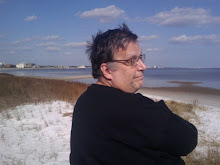I said I would be back soon. This text provided by the US Navy totally rocks.
https://www.netc.navy.mil/nascweb/api/NAVAVSCOLSCOM-SG-111.pdf
Sunday, May 30, 2010
Just got my wonderful wind tunnel in from Pitsco, the X-stream wind tunnel. It has a probe that measures how much drag force is experienced by objects in the tunnel. The wind speed measurement uses the fact that there is a Venturi tube shape in the tunnel itself. As a result, you can get the volumetric flow rate in the wind tunnel from the difference in pressure between the wide mouth and the narrow test area. It uses a manometer that is marked off in thousands of inches/minute. I am now gleefully gathering labs and lectures for the Aerodynamics course from MIT's lecture series. More later.
Sunday, May 16, 2010
Making a Difference
Well, trying to make progress at my school on two fronts. We got a grant to buy some National Instrument LabView packages. The grant is providing funds for my training. It is exciting because this will bring us up to the 21 st century in techniques used in top of the line engineering programs, industry and even the military. This package can be used to program and take data, so my students will be in hog heaven.
In addition to this the wind tunnel comes on Monday. This can be used in Mechanical engineering, AP Physics, Honors Physics and Aerodynamics. Students have been asking for this course for a long time, so it should be well received also. This will supply me with what the Japanese call "The reason to get up in the morning" for at least five more years.
In addition to this the wind tunnel comes on Monday. This can be used in Mechanical engineering, AP Physics, Honors Physics and Aerodynamics. Students have been asking for this course for a long time, so it should be well received also. This will supply me with what the Japanese call "The reason to get up in the morning" for at least five more years.
Saturday, May 1, 2010
From tradgedy, a learning opportunity.
The Gulf Coast beaches are my favorite places in the Universe, especially in the off season when the beaches are mostly deserted and in November migrating butterflies fill the air. The seafood is great, and is a big part of the economy. When working with the Army Corp of Engineers, I got to see The Apalachicola river basin. It is a unique environment that owes it's purity to limestone aquifers and several fresh water clams that exist no where else to filter impurities from the water. This results in great oyster beds and shrimp hatcheries that provide 2/3 of American sea food.
Well all of that is pretty much toast. I find it odd that it occurred to me and other science teachers that we should be collecting water samples as the crap from the ongoing spill to teach students. Even disasters have something to show us.
Well all of that is pretty much toast. I find it odd that it occurred to me and other science teachers that we should be collecting water samples as the crap from the ongoing spill to teach students. Even disasters have something to show us.
Subscribe to:
Posts (Atom)
